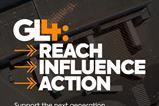The potential for AI to be used in insurance fraud is growing and there has been a major jump in the quality of doctored images now being generated, software specialist FleetCheck warned.
Chief technical officer Neil Avent said there had been recent advances in the realism of both still and digital AI-generated images being used.
“There has been a real step change in the last few months with the more widespread availability of a technology called GANs – or generative adversarial networks,” he explained.
“This uses two neural networks in competition to create images and is now being offered by the mainstream image generation systems, replacing previous diffusion-style techniques.
“The result is that there has been a jump in the quality of video and image generation.
Avent said the biggest potential for fraud was in instances where an accident had occurred and AI was used to exaggerate the level of damage that had resulted.
“If you take an image of a vehicle that has been involved in an accident and asked AI to ‘add scratches and light dents along the door panel’ today then the output is much more convincing than it was even last year,” he said.
“If an employee is involved in a collision, the driver of the other vehicle may take pictures of the damage incurred and ask AI to basically make it worse to increase the value of the claim.
“One of the advantages of GANs technology is that it can do this across multiple images with a high degree of consistency.”
Avent added that right now, AI images and video were probably not sufficiently convincing to make this type of fraud possible, but a tipping point was likely to be reached within months: “We’re reaching a stage where it is not easy even for experts to see that some images have been manipulated and fleets should be aware of the growing potential for fraud and its resulting impact on their insurance costs.
“However, there is a simple solution – asking your drivers who are involved in collisions to take pictures of all the vehicles involved, meaning that a complete record of the accident is created and later use of AI can be much more easily identified.”
FleetCheck partner 1st Choice Insurance said exaggerated claims had been a persistent issues for decades, but the methods used to carry them out had evolved:
“With AI-generated images and videos advancing rapidly, it’s becoming harder to spot manipulations, and there’s a strong likelihood that we’ve already encountered such claims without identifying them,” said Nick Hutson, 1st Choice compliance and training manager.



















